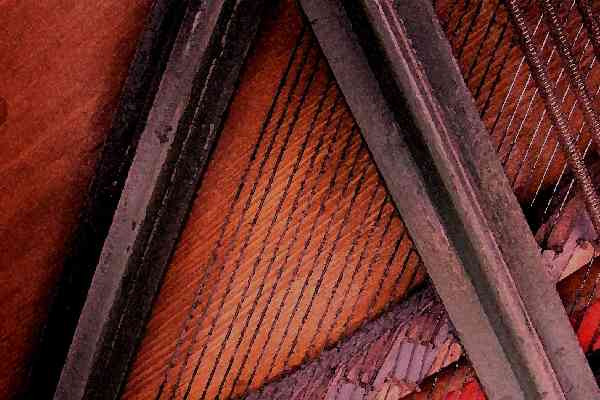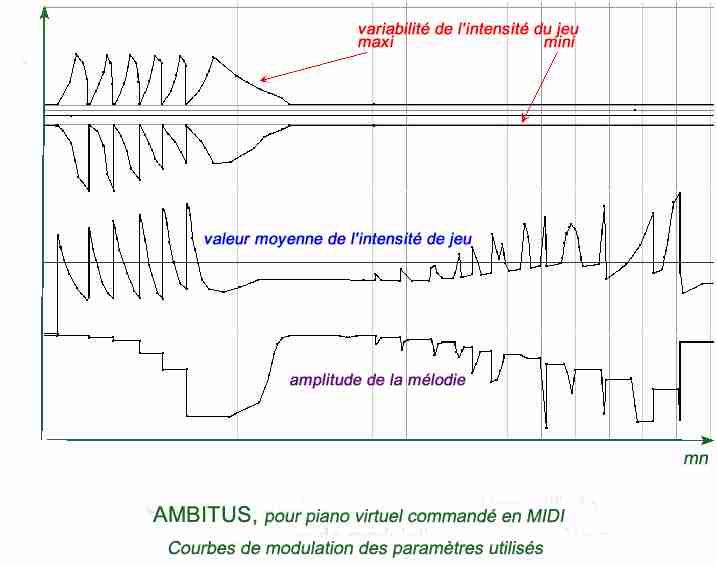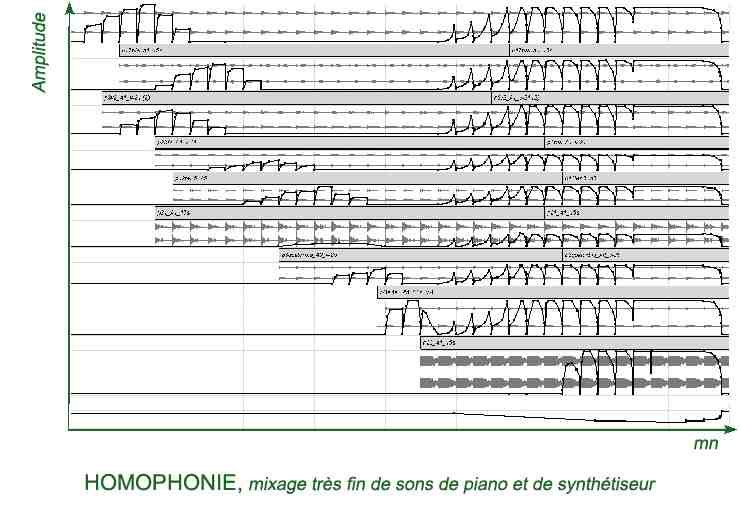
Electro-acoustic works for piano and cello
I explore here the sounds of the piano and the cello, intruments that I like particularly. Instead of using any kind of music theory rules, here the instrument is considered as a simple "sound object"- [1]Cosmogonie (for 16 tracks of cello) Durée: 22'10
- [2]Ambitus (for virtual piano) Durée: 21'26
- [3]Au double archet / The double bow (for two cello) Durée: 6'25
- [4]Homophonie (for piano and synthesizer) Durée: 11'26
- [5] London 1848 (for real piano) Durée: 4'04
Cosmogonie (for 16 tracks of cello): The
first step was to create a set of various sounds using different
techniques to play: noisy (play on the bridge), squeaky (play on the
tuners or near the nut), without generator (ponticello), with the wood
of the bow...Then to compose...
The result evokes in me a kind of cosmogony: a certain harmony emerging slowly from original chaos. Accidents occur. Finally this harmony evolves irremediably to the disorder and the destruction. Read here the critic of Black Sifichi
 Ambitus(for virtual piano) (Ambitus = distance between highest and lowest note in a melody)
Ambitus(for virtual piano) (Ambitus = distance between highest and lowest note in a melody)
1: Gushing - 2: Turbulences - 3: Sinking- 4: Cataclysm
 Au double archet / The double bow (for two cello)
Au double archet / The double bow (for two cello)
The double bow allows me to associate/oppose at the same time conventional sounds and squeakier sounds (obtained by playing on the tuners).
 Homophonie (for piano and synthesizer)
Homophonie (for piano and synthesizer)
I think to Giacinto Scelsi who played during several hours the same note of piano, to immerse on his listening...Starting with a simple note from the piano (in fact a chord A-1/A0) and destroying insidiously this subtle balance using the synthesizer: modifications of the envelopes and of the harmonic contents until the most excessive sound combinations...this was the idea...
 London 1848 (for real piano)
London 1848 (for real piano)
Small electro-acoustic work using my piano, manufactured in London in 1848.
To order:
The result evokes in me a kind of cosmogony: a certain harmony emerging slowly from original chaos. Accidents occur. Finally this harmony evolves irremediably to the disorder and the destruction. Read here the critic of Black Sifichi
 Ambitus(for virtual piano) (Ambitus = distance between highest and lowest note in a melody)
Ambitus(for virtual piano) (Ambitus = distance between highest and lowest note in a melody)1: Gushing - 2: Turbulences - 3: Sinking- 4: Cataclysm
Listening to some works of serial music (such as Sur Incises from P. Boulez) gave me the idea to compose not with notes but with flows of notes whose melody would be completely random. Thus, the first step was to elaborate several kinds of flows with various characteristics in term of ambitus, intensity and tempo (null, weak, strong, variable, constant, explosive, equally spread). Then, I composed, using this new sound material.
 Au double archet / The double bow (for two cello)
Au double archet / The double bow (for two cello)The double bow allows me to associate/oppose at the same time conventional sounds and squeakier sounds (obtained by playing on the tuners).
 Homophonie (for piano and synthesizer)
Homophonie (for piano and synthesizer)I think to Giacinto Scelsi who played during several hours the same note of piano, to immerse on his listening...Starting with a simple note from the piano (in fact a chord A-1/A0) and destroying insidiously this subtle balance using the synthesizer: modifications of the envelopes and of the harmonic contents until the most excessive sound combinations...this was the idea...
 London 1848 (for real piano)
London 1848 (for real piano) Small electro-acoustic work using my piano, manufactured in London in 1848.
To order:
- On the Aventures Electro Acoustiques website
- Available in Paris in Souffle Continu shop
- By download via Believe Digital.